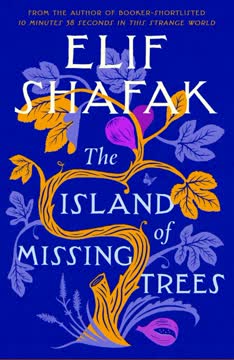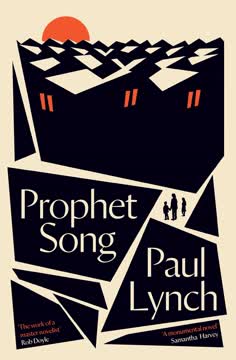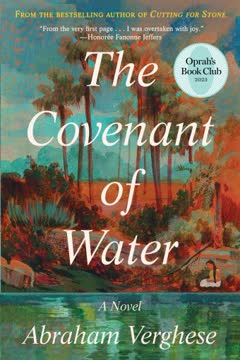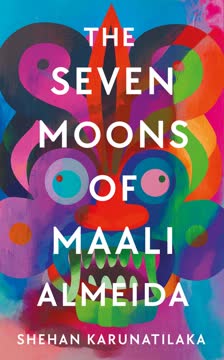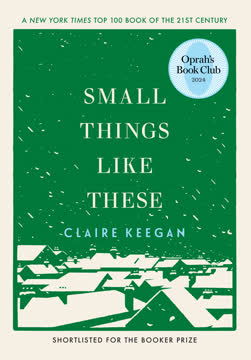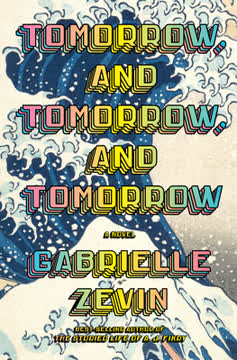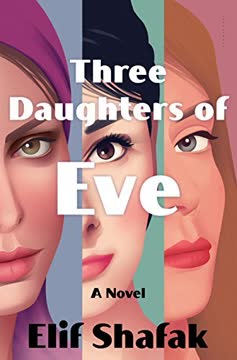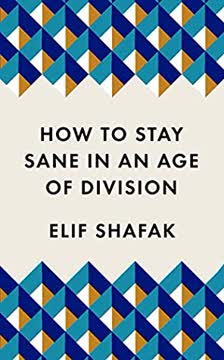Plot Summary
Forbidden Love Amidst Conflict
In the politically and ethnically divided Cyprus of the 1970s, Kostas, a Greek Cypriot, and Defne, a Turkish Cypriot, fall in love. Their relationship is a daring act of defiance against the backdrop of societal hatred and familial disapproval. They meet in secret, their love a beacon of innocence and intensity amidst the ever-present threat of violence. Their clandestine romance is a testament to the power of love to transcend boundaries, even as the world around them teeters on the brink of chaos.
Secrets of The Happy Fig
The Happy Fig, a tavern run by Yiorgos and Yusuf, serves as a sanctuary for Kostas and Defne. This establishment is a microcosm of Cyprus's diversity, frequented by people from all walks of life. Yiorgos and Yusuf, more than just business partners, are lovers, a secret they guard closely in a society that would not accept them. The tavern, with its fig tree centerpiece, symbolizes hidden lives and unspoken truths, a place where love defies the boundaries imposed by the outside world.
A Divided Island's Legacy
Cyprus is a tapestry of cultures and histories, yet it is also a place of deep-seated divisions. The Green Line, a border drawn with a green pencil, physically and symbolically separates Greek and Turkish Cypriots. This division is not just geographical but also emotional, as families and communities are torn apart by historical grievances and ongoing conflict. The island's beauty is marred by the scars of its past, and its people carry the weight of these divisions in their hearts.
The Weight of Inherited Trauma
Ada, the daughter of Kostas and Defne, grows up in London, far from the island of her parents' birth. Yet, she is not free from its legacy. The trauma of Cyprus's history seeps into her life, manifesting in unexpected ways. Ada struggles with feelings of alienation and a sense of inherited sorrow. Her father's love for trees and her mother's unspoken past weigh heavily on her, leading to a moment of emotional release that she cannot fully understand or control.
A Storm of Emotions
In the present day, a storm rages in London, mirroring the emotional turmoil within Ada's family. Her father's obsession with a fig tree, a relic from Cyprus, symbolizes the connection to a homeland they cannot return to. Ada's aunt Meryem arrives, bringing with her stories and secrets from the past. As the storm outside intensifies, so do the emotions within the household, forcing Ada to confront her family's history and her own identity amidst the chaos.
Rituals and Ancient Superstitions
Meryem, Ada's aunt, practices ancient rituals, unknowingly rooted in a deep reverence for trees. These rituals, like hanging rags on branches or using divining rods, reflect a connection to nature that transcends time. Trees, like the fig tree central to the story, are seen as sacred, offering protection and wisdom. This connection is mirrored in the stories of ancient trees in Cyprus, which have witnessed human history and suffering. Meryem's actions, though seemingly superstitious, highlight the enduring bond between humans and the natural world, a theme that resonates throughout the narrative.
Love and War's Consequences
In 1974 Cyprus, Defne and Kostas's love is tested by political turmoil. Defne, isolated by the conflict, struggles with the absence of Kostas, who has been forced to leave for England. The island is engulfed in chaos as military coups and invasions unfold, tearing communities apart. Defne's desperation to communicate with Kostas is thwarted by the violence and division. The couple's separation is emblematic of the broader societal rifts caused by war, illustrating how personal lives are irrevocably altered by political events.
Secrets Buried in Cyprus
Years later, Kostas returns to Cyprus, haunted by the past and seeking closure. He discovers the island's history of division and the secrets buried within its soil. The Committee on Missing Persons works tirelessly to uncover the remains of those lost in the conflict, including Kostas's friends, Yusuf and Yiorgos. The island's landscape, scarred by war, holds the stories of those who suffered, and Kostas's journey becomes one of reconciliation with the past. The narrative explores the enduring impact of history on individuals and the importance of uncovering hidden truths.
Reconnecting with the Past
In London, Ada grapples with her family's history and her own identity. Her aunt Meryem's visit brings stories of Cyprus, connecting Ada to her roots. As Ada learns about her parents' past, she begins to understand the weight of inherited trauma. The fig tree, a symbol of memory and connection, serves as a link between generations. Through conversations with her father, Kostas, Ada gains insight into the complexities of love, loss, and identity. The narrative emphasizes the importance of understanding one's past to navigate the present.
Healing Through Nature
The fig tree, central to the story, symbolizes resilience and the possibility of healing. As Kostas tends to the tree, he reflects on the interconnectedness of life and the potential for renewal. The tree's journey from Cyprus to London mirrors the characters' own journeys of healing and reconciliation. Through nature, the characters find solace and a sense of continuity amidst the chaos of their lives. The narrative underscores the power of nature to heal wounds, both personal and collective, and to offer hope for the future.
Characters
Ada Kazantzakis
Ada is the daughter of Kostas and Defne, growing up in London with the weight of her parents' past. She struggles with feelings of alienation and inherited trauma, leading to an emotional outburst at school. Ada is caught between the world she knows and the legacy of Cyprus, a place she has never visited but feels deeply connected to.
Kostas Kazantzakis
Kostas is a Greek Cypriot who fled Cyprus for London, carrying with him the memories of a forbidden love and a divided homeland. He is a botanist, finding solace in the natural world, particularly in the fig tree he brought from Cyprus. Kostas is a loving father but struggles to connect with Ada, as he is consumed by his own grief and memories.
Defne Kazantzakis
Defne, a Turkish Cypriot, is Ada's mother and Kostas's wife. Her past is shrouded in mystery, and she carries the pain of her family's disapproval and the loss of her homeland. Defne's struggles with mental health and alcohol are hinted at, leaving a lasting impact on Ada.
Meryem
Meryem, Defne's sister, embodies the connection between past and present through her rituals and stories. Her presence in London bridges Ada to her family's history, offering insights into the cultural and emotional legacy of Cyprus. Meryem's superstitions and beliefs highlight the enduring bond between humans and nature, serving as a reminder of the past's influence on the present.
Yiorgos and Yusuf
Yiorgos and Yusuf, owners of The Happy Fig tavern, represent the hidden lives and unspoken truths of Cyprus. Their disappearance during the conflict highlights the personal toll of political division. Their story parallels that of Kostas and Defne, illustrating the enduring impact of war on individuals and communities.
Plot Devices
The Fig Tree
The fig tree serves as a central symbol in the narrative, representing the connection between past and present. It embodies the memories of Cyprus and the possibility of healing and renewal. The tree's journey from Cyprus to London mirrors the characters' own journeys of reconciliation and understanding, highlighting the enduring impact of history on individuals and families.
The Green Line
The Green Line is a physical and symbolic border that divides Cyprus. It represents the historical and ongoing conflict between Greek and Turkish Cypriots. The line is a reminder of the island's divisions and the pain that continues to affect its people, including those who have left, like Kostas and Defne.
Inherited Trauma
Inherited trauma is a key theme, exploring how the pain and experiences of previous generations affect the present. Ada's struggles with her identity and emotional outbursts are tied to the unresolved traumas of her parents and the history of Cyprus. This device highlights the enduring impact of history on individuals and families, emphasizing the importance of understanding one's past to navigate the present.
Analysis
"The Island of Missing Trees" by Elif Shafak is a poignant exploration of love, identity, and the enduring impact of history. Through the intertwined stories of Kostas, Defne, and their daughter Ada, the novel delves into the complexities of forbidden love amidst political turmoil and the weight of inherited trauma. The fig tree serves as a powerful symbol of memory and connection, bridging past and present. Shafak's narrative underscores the importance of understanding one's roots to navigate the present and find healing. The novel highlights the resilience of the human spirit and the potential for renewal through nature, offering a message of hope and reconciliation in the face of division and loss.
Last updated:
FAQ
Synopsis & Basic Details
What is The Island of Missing Trees about?
- Intergenerational Trauma Unveiled: The novel weaves together the past and present, following Ada Kazantzakis, a British-Cypriot teenager in London, as she grapples with inherited trauma and unspoken family secrets stemming from her parents' forbidden love amidst the 1974 conflict in Cyprus.
- Narrative from a Fig Tree: A unique narrative voice, that of a fig tree, offers an arboreal perspective on human history, migration, and the enduring impact of war, providing a lyrical and philosophical commentary on the characters' lives and the island's fate.
- Quest for Identity & Belonging: At its core, the story is a poignant exploration of identity, belonging, and the search for truth, as Ada, her father Kostas, and her aunt Meryem navigate grief, cultural divides, and the profound silences that have shaped their lives.
Why should I read The Island of Missing Trees?
- Unique Narrative Voice: Experience a story told partly from the perspective of a fig tree, offering profound philosophical insights into human nature, memory, and the interconnectedness of all life, a truly distinctive literary device.
- Emotional Depth & Historical Resonance: Delve into a deeply moving narrative that explores the lasting scars of conflict, forbidden love, and inherited trauma, set against the vivid historical backdrop of Cyprus, making it a powerful read for those interested in human resilience.
- Rich Symbolism & Lyrical Prose: Elif Shafak's masterful use of symbolism, particularly the fig tree, and her evocative, poetic language create a rich tapestry of meaning, inviting readers to ponder themes of displacement, identity, and the healing power of nature.
What is the background of The Island of Missing Trees?
- Cyprus Conflict & Division: The novel is deeply rooted in the historical and political context of Cyprus, specifically the 1974 Turkish invasion and the subsequent division of the island into Greek Cypriot South and Turkish Cypriot North, marked by the Green Line. This conflict led to widespread displacement, violence, and unresolved disappearances.
- Intercommunal Relations: It explores the complex and often fraught relationships between Greek Cypriots and Turkish Cypriots, highlighting the societal pressures, familial disapproval, and personal sacrifices made by those who dared to cross ethnic and religious lines.
- Ecological & Cultural Heritage: The story is imbued with the island's rich natural environment and cultural folklore, from its diverse flora and fauna (like carob trees, fruit bats, butterflies) to ancient superstitions and proverbs, emphasizing the deep connection between people, land, and memory.
What are the most memorable quotes in The Island of Missing Trees?
- "Time is a songbird, and just like any other songbird it can be taken captive.": This quote from the Prologue, spoken by the Fig Tree, powerfully introduces the theme of time's manipulation and the enduring nature of memory, suggesting that even time can be held prisoner by trauma and history.
- "The past is a dark, distorted mirror. You look at it, you only see your own pain. There is no room in there for someone else's pain.": Defne's poignant observation to young Ada encapsulates the novel's central conflict regarding inherited trauma and the difficulty of empathy across historical divides, highlighting how collective suffering can become insular.
- "A tree is a memory keeper. Tangled beneath our roots, hidden inside our trunks, are the sinews of history, the ruins of wars nobody came to win, the bones of the missing.": The Fig Tree's profound statement underscores its role as a silent witness and repository of forgotten truths, emphasizing nature's enduring memory in contrast to human forgetfulness or selective remembrance.
What writing style, narrative choices, and literary techniques does Elif Shafak use?
- Dual Narrative Perspective: Shafak employs a unique dual narrative, alternating between a third-person perspective following Ada, Kostas, and Meryem in the present, and a first-person perspective from the sentient fig tree, offering a multi-layered and often philosophical commentary on human events.
- Lyrical and Evocative Prose: The language is highly poetic and sensory, rich with metaphors and similes, particularly in the fig tree's narration, which imbues natural elements with human emotions and wisdom, creating a deeply immersive and contemplative reading experience.
- Non-Linear Storytelling & Foreshadowing: The narrative frequently shifts between different time periods (1974 Cyprus, early 2000s Cyprus, late 2010s London), gradually revealing past events and their consequences, while subtle foreshadowing (like the well in the prologue or Ada's scream) builds suspense and thematic resonance.
Hidden Details & Subtle Connections
What are some minor details that add significant meaning in The Island of Missing Trees?
- Ada's Butterfly Sketch: Ada's initial sketch of a "brittle, easily breakable" butterfly in her notebook subtly foreshadows her own emotional fragility and the eventual viral spread of her scream, which is later mirrored by the mass migration of painted lady butterflies, symbolizing both vulnerability and unexpected resilience.
- The Well's Hidden Secret: The detailed description of the well in the prologue, containing the chained bodies of Yiorgos and Yusuf and a pocket watch stopped at "eight minutes to midnight," is a chilling premonition of their tragic fate, emphasizing the island's buried secrets and the relentless march of time towards revelation.
- Meryem's "Ayip" Concept: Meryem's repeated use of the Turkish word "ayip" (shame) reveals a deep-seated cultural conditioning that has shaped her life choices, from her conservative dress to her reluctance to express personal desires, highlighting the societal pressures that constrained women in Cyprus and contributed to the family's silence.
What are some subtle foreshadowing and callbacks in The Island of Missing Trees?
- The "Crack-Crack-Crack" Sound: The recurring sound of "crack-crack-crack" first appears when Kostas buries the fig tree, symbolizing its roots breaking, and later when Ada screams, feeling her "bones breaking," subtly linking the tree's physical trauma to Ada's inherited psychological pain and the breaking of internal barriers.
- The Music Box Motif: The music box, given by Kostas to Defne in their youth and later by Meryem to Ada, serves as a poignant callback to their forbidden love and the secrets it held, becoming an heirloom that carries both joy and sorrow across generations, symbolizing enduring connection despite separation.
- Butterfly Migration as a Metaphor: The detailed descriptions of butterfly migration, particularly the painted ladies changing their route, subtly foreshadow the unexpected return of Kostas to Cyprus and the eventual reunion of Defne and Kostas, suggesting that life, like nature, finds new paths despite obstacles and past patterns.
What are some unexpected character connections in The Island of Missing Trees?
- Kostas's Grandfather's Deafness: The revelation that Kostas's grandfather was deaf and killed because he couldn't hear orders adds a profound layer to Kostas's own quiet nature and his mother's deep-seated trauma, subtly explaining his family's history of miscommunication and the tragic consequences of unheard voices.
- Defne's Connection to CMP Work: Defne's later career as an archaeologist with the Committee on Missing Persons, actively digging for the disappeared, is a powerful and unexpected connection to her own personal loss (her baby, Yusuf, and Yiorgos), transforming her private grief into a public mission for truth and closure.
- Meryem's Hidden Vulnerability: Despite her boisterous and traditional exterior, Meryem's confession about her failed marriage, childlessness, and her desire to wear colorful clothes she never dared to, reveals a deep vulnerability and a life constrained by societal expectations, unexpectedly mirroring Defne's own hidden sorrows.
Who are the most significant supporting characters in The Island of Missing Trees?
- Panagiota (Kostas's Mother): Her deep-seated superstitions, resilience in widowhood, and tragic loss of two sons profoundly shape Kostas's character and his eventual decision to leave Cyprus, highlighting the immense burden carried by mothers in conflict zones.
- Yiorgos and Yusuf (Tavern Owners): Beyond being a safe haven for the lovers, their secret gay relationship and eventual disappearance underscore the extreme dangers faced by those who defied societal norms in Cyprus, making their fate a poignant symbol of hidden lives lost to hatred.
- Dr. Norman (British Gynecologist): His brief but crucial role in Defne's life, offering help during her secret pregnancy, represents a rare instance of cross-cultural compassion amidst the conflict, and his later contact with Kostas becomes the catalyst for uncovering a major family secret.
Psychological, Emotional, & Relational Analysis
What are some unspoken motivations of the characters in The Island of Missing Trees?
- Defne's Silence on the Past: Defne's fervent desire to shield Ada from the past ("If we want our child to have a good future we have to cut her off from our past") stems from her own profound, unhealed trauma and the belief that forgetting is a form of protection, rather than a lack of love for her daughter.
- Kostas's Retreat into Nature: Kostas's deep immersion in botany and his preference for the company of trees ("He spoke about the impact of deforestation with a passion his counterparts reserved for fluctuations in their personal stock portfolios") is an unspoken coping mechanism, a way to find order and solace in a world where human conflicts are chaotic and painful.
- Meryem's Proverbial Wisdom: Meryem's constant use of proverbs and superstitions is not merely cultural tradition but an unspoken attempt to impose order and meaning on a chaotic world, and to offer comfort and guidance to Ada, reflecting her own need for stability and control in the face of unpredictable loss.
What psychological complexities do the characters exhibit in The Island of Missing Trees?
- Inherited Trauma & Epigenetic Memory: Ada's unexplained scream and her feeling of carrying "a sadness that was not quite her own" exemplify the concept of inherited trauma, suggesting that the psychological wounds of past generations can manifest in the present, even without direct experience.
- Denial as a Coping Mechanism: Both Kostas and Defne exhibit denial regarding their past, particularly the circumstances of their separation and the fate of their first child. This collective silence, while intended to protect, ultimately creates a "pitiful gulf" between them and Ada, highlighting the psychological cost of suppression.
- The Burden of Secrecy: Defne's decision to keep her pregnancy and the baby's adoption a secret, driven by shame and fear, leads to immense psychological strain, manifesting in her later struggles with alcohol and her inability to fully process her grief, illustrating how secrets can fester and cause long-term emotional damage.
What are the major emotional turning points in The Island of Missing Trees?
- Ada's Classroom Scream: Ada's uncontrollable scream in history class is a pivotal emotional release, a manifestation of her inherited, unexpressed grief and anxiety, forcing her family to confront the unspoken traumas that have permeated their lives.
- Kostas's Discovery of Dead Bats: Kostas's profound grief over the dead fruit bats in Cyprus, leading him to sob when he hadn't cried for his murdered brother, marks a turning point where his scientific detachment breaks, revealing his deep empathy for nature and foreshadowing his life's work.
- Defne's Confession of Her First Child: Defne's raw, tearful confession to Kostas about their first child, born and adopted in secret, is a cathartic emotional turning point, finally breaking years of silence and allowing both characters to confront the depth of their shared loss and the sacrifices made for their love.
How do relationship dynamics evolve in The Island of Missing Trees?
- Kostas and Ada's Estrangement to Reconnection: Initially distant and struggling to communicate after Defne's death, their relationship evolves from awkward silence to a tentative reconnection, culminating in Kostas's vulnerable confession about Defne's "girdling" roots, fostering a new level of understanding and empathy.
- Defne and Meryem's Complex Sisterhood: Their bond is characterized by deep love intertwined with resentment and unspoken sacrifices. Meryem's lifelong role as Defne's protector and her "ayip" mentality clash with Defne's rebellious spirit, but their shared grief and Meryem's eventual honesty about the past ultimately strengthen their sisterly connection.
- Kostas and Defne's Rekindled Love: Their reunion in Cyprus, initially marked by Defne's guardedness and Kostas's guilt, gradually re-ignites through shared vulnerability, the uncovering of buried truths, and a mutual desire to heal, culminating in their decision to marry and build a new life together in London, symbolizing hope for reconciliation.
Interpretation & Debate
Which parts of the story remain ambiguous or open-ended?
- The Fig Tree's Sentience: While the fig tree narrates much of the story, its exact nature of consciousness and its ability to "absorb" Defne's soul remains open to interpretation, blurring the lines between literal anthropomorphism, metaphorical representation, and magical realism.
- The Full Extent of Defne's "Madness": The novel hints at Defne's mental health struggles and alcohol use, but the precise nature and severity of her condition, and its direct link to her death, are left somewhat ambiguous, allowing readers to debate the interplay of trauma, choice, and fate.
- The Future of Ada's Healing: While Ada begins to understand her inherited trauma and reconnects with her father, the ending suggests her journey of healing is ongoing, leaving open the question of how she will fully integrate her complex heritage and navigate her future identity.
What are some debatable, controversial scenes or moments in The Island of Missing Trees?
- The Exorcist Scene and Djinn Beliefs: Meryem's insistence on taking Ada to an exorcist to cure her "djinn possession" presents a controversial clash between traditional beliefs and modern scientific understanding, prompting debate on the validity of such practices and their psychological impact.
- The Songbird Hunting and Animal Rights: The detailed depiction of illegal songbird hunting in Cyprus and Kostas's visceral reaction to it raises ethical questions about human cruelty to animals and the prioritization of human suffering over ecological concerns, a point of contention even among the characters.
- The "Inherited Trauma" Concept: The novel's central premise that trauma can be passed down genetically or epigenetically, affecting subsequent generations even without direct experience, is a scientifically debated concept, inviting readers to consider the boundaries between biological inheritance and psychological conditioning.
The Island of Missing Trees Ending Explained: How It Ends & What It Means
- Ada's Acceptance of Her Heritage: The novel concludes with Ada embracing her complex identity, symbolized by her willingness to visit Cyprus and meet "islanders, like myself," signifying a move beyond the shame and silence of her parents' generation towards a more integrated understanding of her roots.
- The Fig Tree as Defne's Reincarnation: The most profound revelation is the fig tree's confession that it is Defne's soul, having "transmuted into a tree in order to hold on to love," suggesting that love and memory can transcend physical death and find new forms of existence, offering a hopeful, cyclical view of life and loss.
- Cyclical Healing and Enduring Love: The final scene, with Kostas preparing to unbury the fig tree (Defne), symbolizes the cyclical nature of healing and renewal. It implies that while pain and loss are inevitable, love, memory, and connection to nature provide a continuous source of life, allowing the past to be acknowledged and integrated rather than buried forever.
Review Summary
The Island of Missing Trees is a lyrical, poignant novel exploring love, loss, and identity across generations and cultures. Set in Cyprus and London, it interweaves the forbidden romance of Greek Kostas and Turkish Defne with their daughter Ada's journey of self-discovery. The narrative is uniquely enhanced by the perspective of a fig tree, offering insights into nature and human history. While some readers found the tree's voice challenging, many praised Shafak's beautiful prose, atmospheric storytelling, and exploration of war's lasting impacts on families and communities.
Similar Books
Download PDF
Download EPUB
.epub digital book format is ideal for reading ebooks on phones, tablets, and e-readers.
